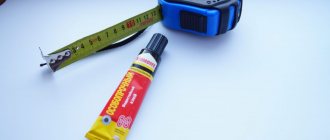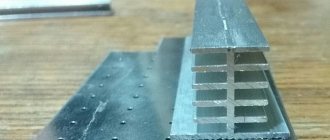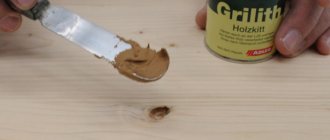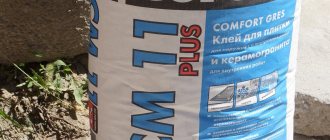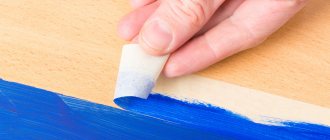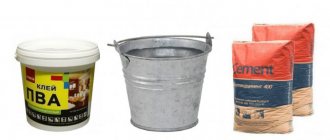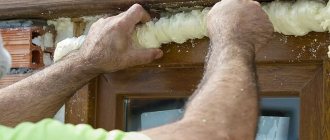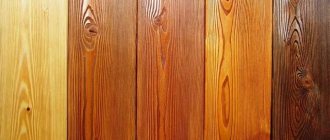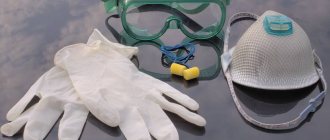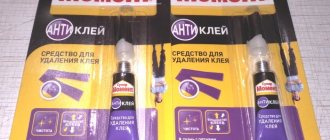In the twentieth century, a “by-product” of the experiments of the American chemist Harry Coover, who worked on the creation of transparent plastic for optical sights, was a certain substance with a unique ability to firmly connect various materials. This is how superglue was born.
The action of any superglue is ensured by the cyanoacrylate it contains. This component, when interacting with air, quickly hardens, firmly connecting the surfaces. This is why it is so difficult to remove Moment glue from clothes or remove stains from other materials. However, the problem can be solved.
How to remove Moment glue from your hands: 5 delicate ways
However, not everyone is so prudent as to stock up on anti-glue in advance. Folk remedies will come to the aid of the “victims”. You can remove superglue from your hands using five delicate compounds that do not injure the skin.
Soap solution
Peculiarities. Warm water and any detergent (coarsely grated laundry soap, liquid soap or dishwashing liquid) are used as active ingredients.
How to act
- Fill a suitable size container (basin or deep bowl) with warm water.
- Add detergent (a very strong soap solution is needed).
- Soak your hands in the mixture for ten minutes or more. As the solution cools, you need to add warm water from a pre-prepared kettle standing nearby.
- Use a soft sponge to wipe the stained areas. You can use a pumice stone, but you should rub it carefully so as not to injure the skin.
- Wash your hands with running water.
- Repeat if necessary.
To enhance the effect, after the bath you need to treat your hands with margarine, Vaseline or glycerin - this will make the glue rub off easier.
Vinegar and vegetable oil
Peculiarities. Acetic acid and fats contained in the oil destroy the structure of cyanoacrylate, making it easier to wash the product off the skin.
How to act
- Prepare a warm vinegar solution and pour it into a basin or bowl.
- Immerse your hands in the composition.
- Wait ten minutes.
- Soak a cotton pad in vegetable oil and begin wiping your hands off the glue.
- Wash off any remaining product with warm water and soap.
Nail polish remover
Peculiarities. You will need nail polish remover containing acetone.
How to act
- Apply nail polish remover to the dried glue using a cotton pad.
- Wait five to ten minutes.
- Wash your hands under warm running water for 15-20 minutes, alternately treating the skin with soap and a rich cream or lotion.
Baking soda
Peculiarities. Instead of soda, you can use table salt. In this way you can remove clothes.
How to act
- Pour enough water into the baking soda to form a mass that resembles a paste in consistency.
- Apply the composition to the dried glue.
- After five to ten minutes, remove the residue with running water.
Ammonia
Peculiarities. Removing glue with ammonia is not recommended for excessively dry and sensitive skin. Work with ammonia in a well-ventilated area.
How to act
- Using a cotton pad, wipe the contaminated areas with ammonia.
- Wait five to seven minutes.
- Wash your hands with running warm water.
There is no need to remove the glue from your hands: along with dead skin particles, it will come off on its own after two to three days. True, it will be very difficult to do everyday things because of your fingers sticking to everything.
Recommendations
- When working with Moment, your palms should be protected with gloves.
- Initially, you should try to remove the glue using the most gentle methods possible. The safest are exfoliating products, fatty creams, lotions and products based on them.
- Most chemical solvents are toxic and have a strong smell, so you need to work with them in well-ventilated areas, away from children, and avoid contact with mucous membranes.
- After using chemicals, hands should be washed with water and lubricated with a cream with moisturizing and nourishing properties. It is best to take cosmetics containing vitamins A and E. If you don’t have such cosmetics on hand, you can take vegetable oil or make a mask from egg whites and lemon juice.
- If the glue on your palms causes a chemical burn or a severe allergic reaction to them, you should definitely seek help from a medical specialist. You also need to go to a medical facility if the composition gets on your lips or eyelids.
Safety precautions when cleansing the skin
When removing glue from your hands, you need to:
- monitor the skin reaction - in case of undesirable manifestations (severe redness, irritation), stop manipulation immediately;
- do not use sandpaper or gasoline - it is important to painlessly and carefully remove superglue from the skin;
- take care of your hands - after any procedure aimed at removing glue, lubricate the skin with a nourishing and/or moisturizing cream.
You can prepare your own restorative hand mask. Crush warm boiled potatoes and mix with heated milk to obtain the consistency of thick sour cream. Apply the mixture to your fingers and put on cotton gloves. After 15-20 minutes, wash your hands with running water and apply nourishing cream.
What kind of glue did you use?
There are a huge number of types of glue, each with a unique composition. Depending on it, stain removal methods will vary. In everyday life we most often use:
- PVA glue,
- glue stick,
- wallpaper glue,
- silicate glue (liquid glass),
- rubber glue,
- Super glue.
The first three types - with rare exceptions - are water-soluble, and there should be no problems with their removal. We'll look at the rest in more detail.
Suitable solvents for other surfaces
Having decided to remove the glue stain, you need to:
- start cleaning as soon as possible - the more the glue dries, the more difficult it is to save your favorite thing;
- check the effect of the product on an inconspicuous area - the aggressive composition can not only dissolve the glue, but also damage the surface, as well as discolor the painted material;
- Observe safety precautions - it is recommended to clean off the glue with rubber gloves in a well-ventilated area.
Video on the topic
Products that superglue is “afraid of”
Products that destroy cyanoacrylate will help remove superglue from fabric, shoes, furniture and other surfaces:
- acetone (or nail polish remover);
- vinegar solution (a tablespoon per glass of water);
- lemon juice;
- "Dimexide";
- ammonia;
- false eyelash remover.
"Dimexide" is a medicine prescribed for the treatment of joints. The drug easily penetrates the body through the skin, so when using it, be sure to wear rubber gloves.
Clothing and fabric
- Place the product on a sheet of thick cardboard.
- Soak a cotton pad in the chosen product.
- Treat dried glue.
- Wait 30-60 minutes.
- Using a brush or sponge, scrub off the stain.
- Rinse the product in clean water.
There is no need to try to remove dried Moment glue from clothes if the item is made of delicate fabric: it is better to immediately take the item to dry cleaning.
Leather shoes and bags
- After moistening a cotton pad with solvent, wipe the stain.
- Wait 15-20 minutes.
- Remove easily coming off adhesive with a damp cloth.
- Wipe the treated area dry.
To clean glue from shoes and other leather products without scratches, you need to wipe off the stain with a soft sponge or cotton pad.
Suede products
- Hold the product over boiling water for several minutes (or use a steam generator).
- Soak a cotton pad with the chosen product and wipe the stain.
- Remove residues with a clean damp cloth.
- Apply suede impregnation to the treated area and lift the pile with a special brush.
Floor and cabinet furniture
- Moisten a cotton pad with solvent.
- Treat the contaminated area and wait 15 minutes.
- Pick up the adhesive stain from the edge with a wooden or silicone spatula and remove. If the surface is scratch-resistant, you can use sandpaper to scrape off the stain faster.
- Wipe the treated area with a clean cloth.
You can remove superglue from furniture and floors with gasoline or a solvent such as white spirit. In this case, you need to open all the windows and send the children for a walk. Gasoline does an excellent job of removing traces of a glue gun.
Upholstery of upholstered furniture
- Soak a napkin with your chosen product.
- Apply to the stain for 20-30 minutes.
- Wipe the treated area with a clean damp cloth.
Sometimes a mechanical method helps to quickly remove dried instant glue from upholstered furniture: you can “beat” the stain using a rolling pin or a wooden masher.
What is prohibited to do
- Forcefully separate fingers stuck together by glue without using special compounds.
- Peel off dried superglue, as this can cause deep damage to the skin. It is better to initially soften the stain and only then scrape it off.
- Remove dried superglue with sharp objects.
- Use chemicals if the skin is injured, even minor scratches.
- Use toxic products in poorly ventilated areas.
- Use flammable products near sources of direct fire.
Hot and cold processing methods
Cyanoacrylate is destroyed under the influence of high and low temperatures, so in some cases an iron, hair dryer and freezer will help remove the glue.
Freezer
Peculiarities. Cold helps remove superglue from clothes and shoes. This method can be used if there are traces of fallen rhinestones on your T-shirt, or if chewing gum is stuck to your jeans.
How to act
- Place the stained item in a plastic bag and tie the bag tightly.
- Place in the freezer for several hours - the adhesive film will become fragile and can be easily peeled off.
Hairdryer
Peculiarities. The hot air produced by the hairdryer will help remove glue from clothes, shoes and surfaces that are not afraid of high temperatures.
How to act
- Direct a stream of hot air at the contamination, subjecting it to heat for several minutes.
- Remove curdled glue with a damp cloth.
- Wipe the treated area dry.
Using a hairdryer you can remove Moment glue from upholstery. But for MDF covered with PVC film, this method is not suitable.
Iron
Peculiarities. You can use an iron to remove superglue from clothes without water. Judging by the reviews, this method is one of the most effective for removing glue from fabric.
How to act
- Spread a cotton cloth on the ironing board and place the product with the adhesive stain.
- Cover the top with another piece of cotton fabric.
- Iron the area with the stain on both sides with a hot iron.
- Repeat if necessary.
The main feature of superglue
Superglue was invented in the mid-twentieth century in America as a result of experiments to create a material for optical sights. The resulting substance did not meet the requirements of the developers, but due to its super property of instantly gluing everything together, it was patented. Superglue, Super Moment, and Second contain one substance that can instantly harden when interacting with the slightest particles of moisture from the air. This is cyanoacrylate. It immediately bonds the surfaces it comes into contact with. Moreover, the gluing is very strong. Therefore, removing traces of glue is quite problematic.
Superglue of any brand contains cyanoacrylate as a base.
Unfortunately, this glue can stick to any surface, so you need to work with it very carefully. You can wipe the stain off the surface if it is not cotton or wool, with which the glue can react violently before it ignites.
How to remove silicate glue
postirke.ru
Silicate glue, or liquid glass, is an aqueous alkaline solution of sodium, potassium or lithium silicates. It dissolves in water, so if this mischief maker is responsible for your stained clothes, get the basins ready.
- If the glue has just been spilled, wash the stained areas with warm water: fresh stains will be removed without difficulty.
- If the glue has dried on the skin, the recipe is the same. And you can add a little soap.
- If the glue has dried on your clothes, dissolve 3-4 tablespoons of soda in a liter of water. Soak things in this solution for several hours. Then remove the residue with a brush or scraper.
- If the liquid glass has dried on the glass, there is little chance. Due to the similarity of materials, diffusion begins. The only thing you can do is soak the stain in water for several hours and then scrape it off with a blade. Alas, traces will remain in any case.
Universal compositions for removing adhesive traces at home
Regardless of the type of glue, there are universal products that can handle any stain. These include:
- Plain water . It can dissolve almost any glue if you act quickly. With its help you can get rid of stationery, latex, vegetable, carpentry, wallpaper and PVA glue. The principle of removal is simple: the stained area is washed until there are no stains left on it.
Alcohol. It handles most adhesives. Alcohol dissolves even those glue molecules that have managed to firmly adhere to the surface. It is applied to cotton wool or a sponge, which is used to wipe the stain until it disappears completely. If necessary, the material can be left on the stain in the form of a compress.- Acetone. It is one of the popular solvents, as it can handle even difficult stains. To remove the adhesive composition, soak a cotton pad in acetone and use it to treat the surface until completely clean.
- Vegetable oil . The fat base makes the glue more pliable and makes it easier to remove it from the surface. To clean, use a cotton pad soaked in oil and rub the stain until it disappears completely. If the glue is persistent, then you will need to make some effort, but the oil can deal with sticker marks in no time.
- Solvents: gasoline, white spirit, turpentine, solvent 646, R-4, RS-2, etc. These caustic compounds allow you to remove different types of glue without leaving a trace. They are used to combat stubborn stains, for example, from silicate glue, Titanium, liquid nails and more.
Alcohol, vegetable oils and water are safe adhesive removers and can be used on most materials.
Acetone and solvents are used with caution, as they can damage some surfaces, such as upholstery or paper.
